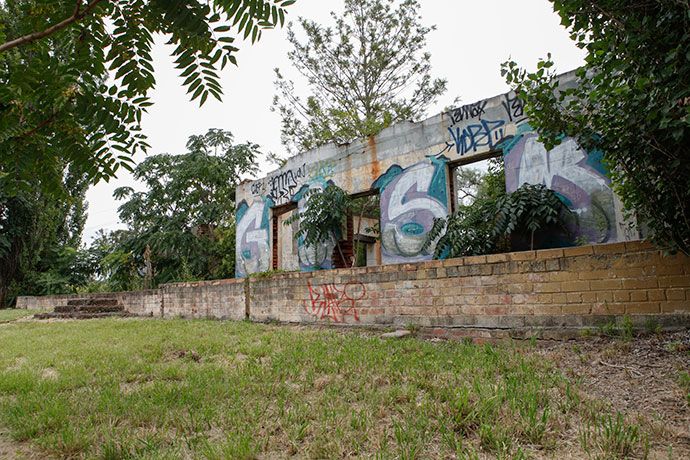The ghostly white ruins, heavily vandalised from years of disuse, that lie just metres from the westbound lanes of the Great Western Highway at St Marys were once part of a bustling roadside inn that provided comfort to thousands of travellers making their way through the area in its colonial days.
The history of the building is rich, essential not only to understanding the lives of people living in colonial Australia but also essential to the growth and development of St Marys as a township, and its existence is intertwined with numerous other historic buildings across Penrith.
The building’s history begins in 1826, when Englishman James Hackett was convicted of a crime in his own country and elected to move to Australia as
a convict.
Hackett arrived in Australia in November that year and took up a position working on the grounds of pioneer John Jamison’s mansion ‘Regentville’.
He was a hard worker and so history tells it, a very talented jockey who caught the eye of Jamison, who was a horse racing enthusiast and commissioned the area’s first picnic races.
In 1835, Hackett won his Ticket of Leave and was free to take up work in the growing township of Penrith.
Looking back to his roots, he began work as a butcher, which was the family trade back home in England.
In the 1840’s he bought a number of land parcels in St Marys and on one of them, right beside South Creek, he built a home.
This house was single storey and just six rooms in size, with a sweeping verandah.
Though there is only evidence of one building, and a small moat-like structure, it is believed that there would have been a number of other structures near the house and there is still evidence of gardens and groves of trees.
The building did not remain as just six rooms for long.
Recognising that the location, just metres from the Great Western Highway (formerly Great Western Road), led travellers across the Blue Mountains, Hackett quickly extended the home by three, to nine rooms in size and christened it Woolpack Inn, although the exact spelling of the name is often disputed.
It is reported that the property was used as a roadside inn from about 1852 and Hackett began to call himself an innkeeper, but a number of sources say that at the same time as being used as an inn, the building was used as a butchery.
By definition, the location of the building – so close to the road linking the west to the coast – was perfect for a roadside inn and would see many travellers pop in on their way east or west, most commonly by horse and cart.
It was one of many along the major route and together they formed an essential part of life.
But while the Woolpack Inn’s success came as a result of its location, so did its downfall.
In 1860, the building of the railway drove traffic away from that part of the Great Western Highway and as a result, tore away a large portion of the inn’s business.
In addition to this, the inn sat close to the banks of South Creek, which was and still is prone to flooding and was adjacent to a bridge that allowed travellers to cross the creek.
In the same year as the railway dragged away potential customers, a severe flood swept away the bridge and stopped foot traffic altogether.
In the years to come there was a battle between man and nature as the bridge, stubbornly rebuilt, was torn down by floods again and again.
By the late 1860’s, Hackett, who had become quite an entrepreneur, had begun to focus on his other business endeavours and trading ceased at the inn in 1874.
Hackett lived at the spot for a number of years. He died in 1897 and the property was passed down the family line until at least the 1920’s, when it was reported that distant relatives were still residing there.
The property continued to exchange hands over the years until the 1980’s, when it was passed to the NSW Planning and Environment Commission.
Today, the ruins of the walls are still standing and can still be seen from the Great Western Highway, but after years of vandalism, by way of graffiti, the old house has a haunting feel about it.


